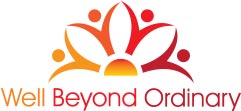Our lives are not a diagnosis or the diagnosis of a loved one. They are not simply about treatment options and side effects. They are complex, layered and integrated parts of a magnificent whole that includes our internal and external experiences, interests, desires, goals and dreams.
A cancer diagnosis requires we consider the impact on relationships, finances, education, career, insurance, communication, fertility, sexuality, enjoyment of life…on every aspect that defines who you are and the life you are leading. And it isn’t contained just to the life of the patient or survivor but reaches well beyond into that person’s community. But no matter what ripple effects, or tsunamis, it may create in your life…you are NOT your diagnosis.
 It isn’t new news that cancer can wreak havoc on your life. And the call to action to get on with living it isn’t new either. But what can be done to answer the question, HOW do I get on with living my life when I know almost everything about the game of life has changed?
It isn’t new news that cancer can wreak havoc on your life. And the call to action to get on with living it isn’t new either. But what can be done to answer the question, HOW do I get on with living my life when I know almost everything about the game of life has changed?
There is now, thanks to the efforts of many people and organizations over the last decade, a rapidly expanding pool of information on the issues facing young adults whose lives are changed forever by cancer. What’s next is generating opportunities to create access to new tools and approaches to help survivors and caregivers create action plans that empower them and put them behind the wheel. From there, they can once again navigate the path they are on by proactively and consciously making choices about their present and future instead of feeling like the wheel is spinning out of control.
My weapon of choice to deal with the creating a different outcome where cancer doesn’t get to win the spin is coaching. It is the only intervention that helped me recover my passion for living and uncover a purpose greater than all the pain of losing my husband. Through coaching, I created tangible steps in all areas of the wheel with the support I needed when feelings of overwhelm threatened to stop me in my tracks.
The first step to HOW is getting clear about the areas in your life where you want to take action and make different choices. Without awareness, change is not possible. From there, breaking down goals into manageable action steps and setting up accountability with someone who will help you stay on track with your plan is a big part of the what’s next. From what I’ve seen, the resiliency of survivors and caregivers is just one of many strengths they can draw on to successfully redesign their lives to live more powerfully. Out of what may sometimes feel like a shattered life, you can weave together a rich and extraordinary present and future filled with choices that help you to thrive!


